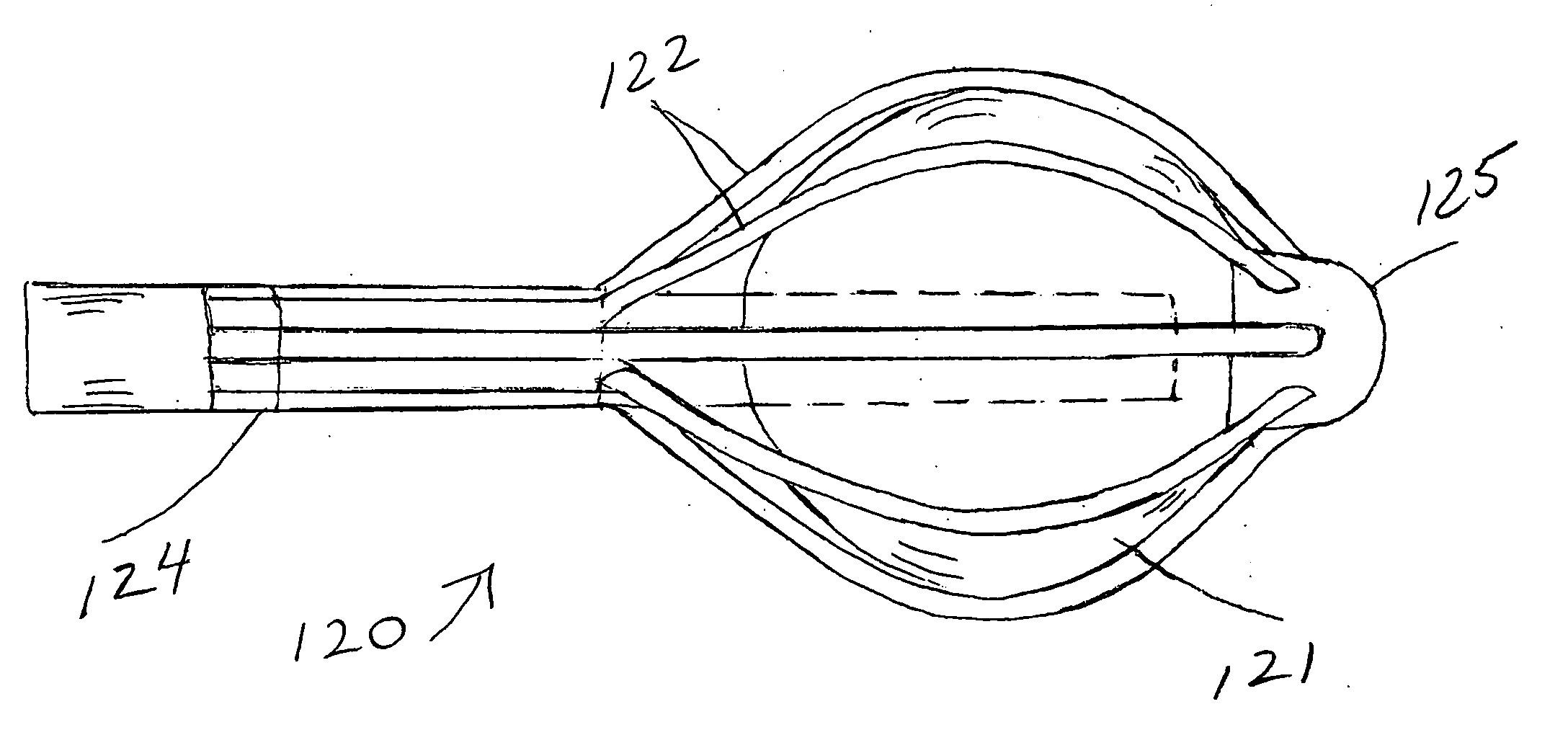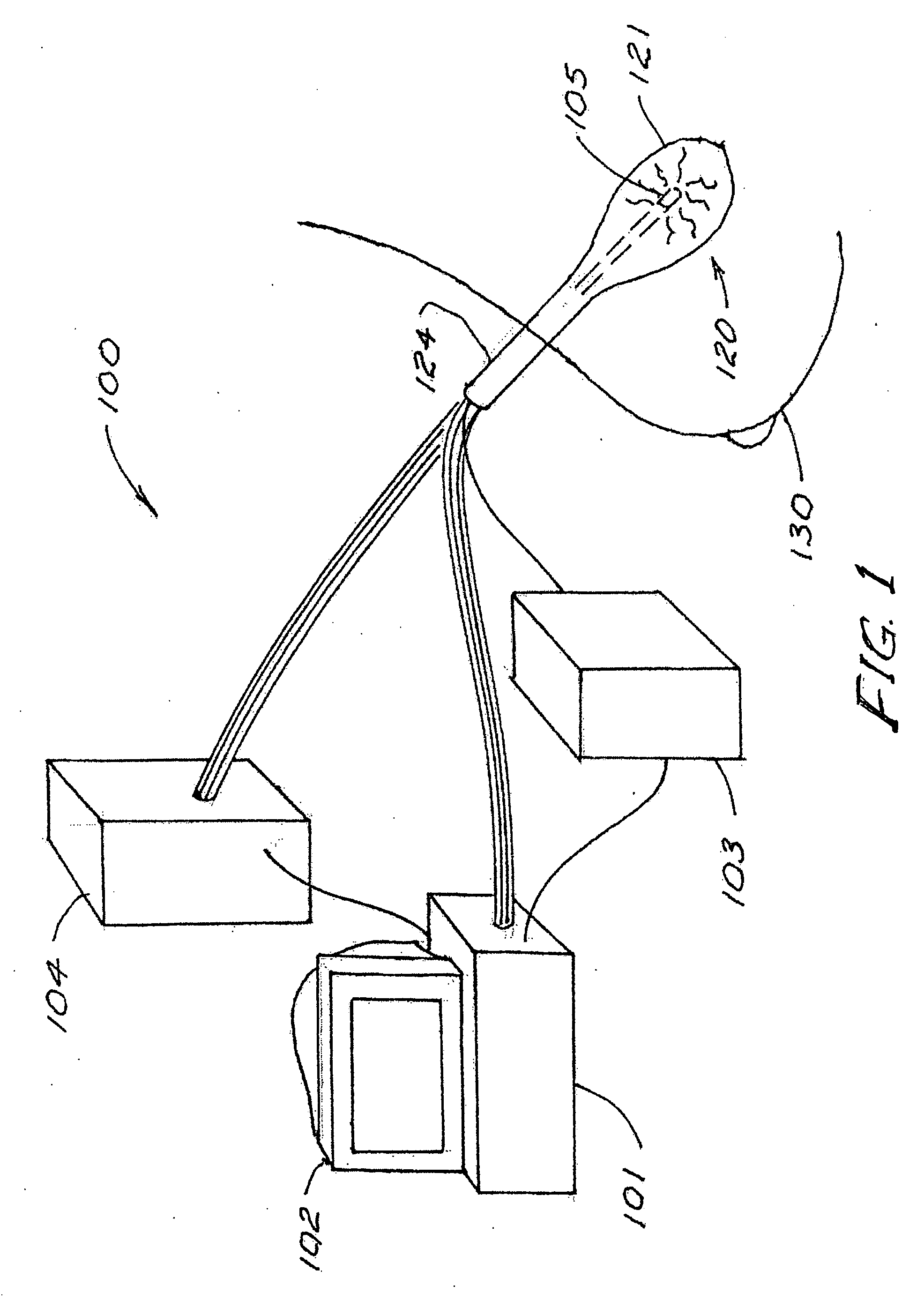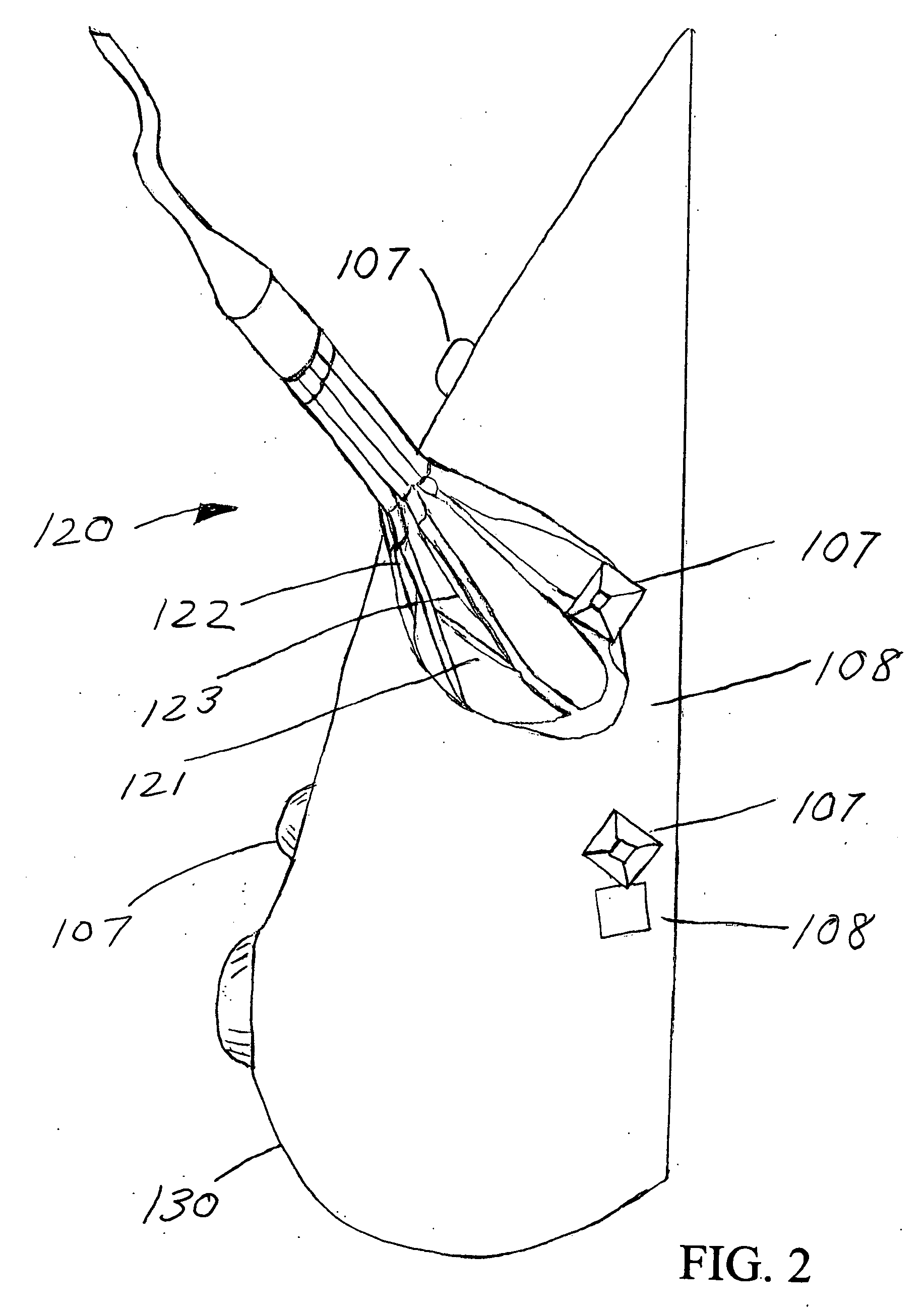Brachytherapy applicator for delivery and assessment of low-level ionizing radiation therapy and methods of use
a low-level ionizing radiation and applicator technology, applied in the field of brachytherapy applicators for delivery and assessment of low-level ionizing radiation therapy and methods of use, can solve the problems of inability to move the patient for imaging, logistically difficult if not impossible, and inability to accurately diagnose the patien
- Summary
- Abstract
- Description
- Claims
- Application Information
AI Technical Summary
Benefits of technology
Problems solved by technology
Method used
Image
Examples
Embodiment Construction
[0023] The system 100 shown in FIG. 1 comprises a processor 101 for making computations based on inputs from other system elements and from the therapist, for indicating system conditions, coordinating and commanding actions of other system components, and for communicating information to the therapist, for example by monitor 102 or alternately, by printed means. Where the radiation source is a miniature x-ray tube (or tubes), a power supply 103 is provided to power the tube (or tubes) in response to commands from the processor. Preferably the system includes a controller 104 to mechanically manipulate the elements of an applicator 120 when the applicator is placed within a tissue volume of the patient for delivery of therapeutic ionizing radiation. The controller acts upon commands from the processor. In the schematic representation of FIG. 1, the applicator 120 is shown positioned in a post-operative cavity within a breast 130. If a controller is not included in the system, manipu...
PUM
 Login to View More
Login to View More Abstract
Description
Claims
Application Information
 Login to View More
Login to View More - R&D
- Intellectual Property
- Life Sciences
- Materials
- Tech Scout
- Unparalleled Data Quality
- Higher Quality Content
- 60% Fewer Hallucinations
Browse by: Latest US Patents, China's latest patents, Technical Efficacy Thesaurus, Application Domain, Technology Topic, Popular Technical Reports.
© 2025 PatSnap. All rights reserved.Legal|Privacy policy|Modern Slavery Act Transparency Statement|Sitemap|About US| Contact US: help@patsnap.com



